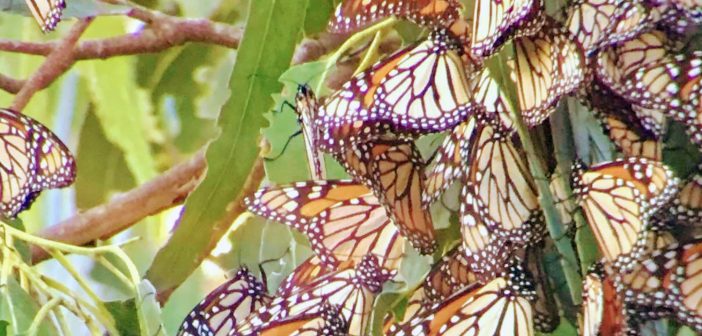In 2017, the Monarch Butterfly Grove held its annual Brush with Butterflies event in Pismo Beach, California. I attended the day long celebration in the company of hundreds of butterflies. Visitors strolled trails between the trees, viewing Monarchs in the leaves and bushes. The grove was visually spectacular, with eucalyptus branches draped in clusters of butterflies.
Again, in 2018, the grove celebrated the migration of the monarch with the annual Brush with Butterflies event. However, this time, one year later, the butterfly population had dropped from an annual count of 12,284 butterflies in December 2017 to 3,500, as of November 26, 2018. Docents estimated the butterflies in attendance during the November 3rd Brush with Butterflies dropped from 3,000-4,000 in 2017 to 600.
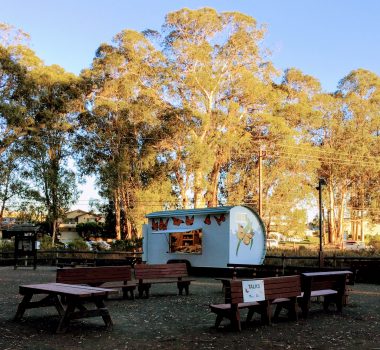
My dismay was shared collectively. The park addressed the vanishing butterfly population in their presentations to the public. I wondered aloud what had caused the decline and what could be done to support the butterflies. The Brush with Butterflies coordinator encouraged me to contact the Xerces Society, an organization devoted to researching and protecting pollinators.
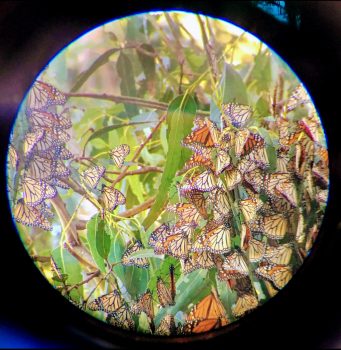
Representative and conservation biologist, Emma Pelton, explained that since the 1980’s, the western Monarch population has dropped 97%. The 2018 western Monarch population dropped an additional 86% across all butterfly sites, leaving the butterfly’s population at .5% of its historical size. The estimated population of the western Monarch in totality is 30,000 remaining butterflies.
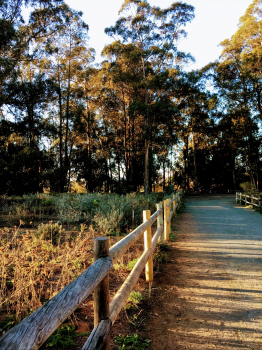
Changes in the Monarch population are attributed to the use of pesticides, the loss of habitat, fewer native milkweeds, drought, development, deforestation, and climate change. Causes for the annual decline between 2017 and 2018 are less certain. The extreme wildfires and late season storms affecting California can cause a “bad weather year.” A bad weather year can compromise the annual Monarch population. However, with the population already in such fragile numbers, the Monarch may not be able to survive bad weather years without facing the eventual elimination of its already tiny population.
Butterflies Through the Glass Video
Naturally, with such startling statistics, Antioch students might wonder what they can do to support the butterfly population. “Monarchs overwinter at the coast, close to neighborhoods and gardens,” explains Pelton. “Gardens are really important this time of year.” Nectar plants, either in a garden or in pots provide a rich source of nourishment to the wintering Monarchs. Butterfly friendly plants in neighborhoods are incredibly important.

Pelton also adds, “Eliminating pesticide use in your garden is a great way to help the Monarch. Even if you don’t see a Monarch, you are still helping the pollinator community.” Many nurseries that carry nectar plants will specify which plants are free of pesticides and which plants are butterfly friendly.
The Xerces Society has a comprehensive list of native nectar plants on their website. The appropriate nectar plants are divided into blooming seasons and specific areas of California and across the United States. This guide is an excellent reference for anyone wishing to plant a butterfly garden. Photographs of flowers and shrubs as well as prime growing seasons and plant characteristics are available on the site. Some examples of wonderful butterfly plants are: Coastal Sand Verbena, California Goldenrod, Dunn’s Lobelia, Bluedicks, and Seaside Fleabane. Shrubs include, California Golden Bush, Coyotebrush, Bladderpod Spiderflower, and California Brittlebush.
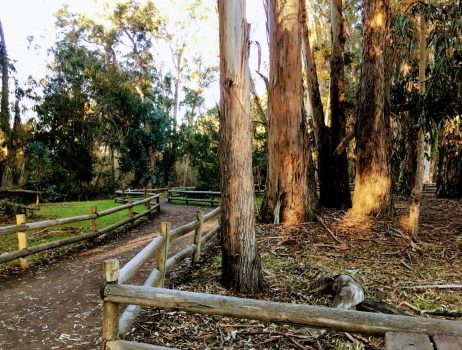
While planting native species of milkweed is presumed to be one of the most helpful ways of sustaining the Monarch population, coastal residents of Santa Barbara and San Luis Obispo counties are not encouraged to plant milkweed as the butterflies have wintering grounds in Pismo and Goleta and it’s ideal for the butterflies to congregate in these areas. Also, planting non-native milkweed creates confusion with migrating Monarch groups and results in disease. Therefore, Santa Barbara residents are encouraged to develop a pesticide-free nectar garden that supports pollinators rather than focus on milkweed.
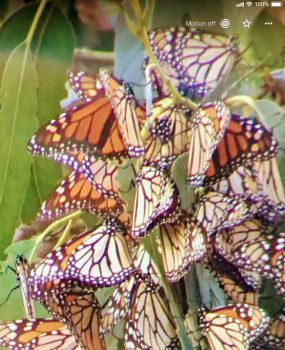
However, if students come across wild, native milkweed and Monarchs anywhere in their travels, or during hikes and biking trips, they are encouraged to photograph and submit the data to the Western Monarch Milkweed Mapper. This database of milkweed and monarch locations is crucial information for researching the butterflies and everyone is encouraged to participate. The database is also found on the Xerces website along with all additional conservation news regarding the protection of local, regional, and national pollinators. For more information regarding Xerces, please visit their website at xerces.org
The Pismo Beach Monarch Butterfly Grove is open from late October to late February. The grove hours are from 10am to 4pm and the park is located at 400 S. Dolliver Street in Pismo Beach, California. It is an extraordinary gift to view these beautiful creatures. Even in their small numbers, the butterfly clusters through the park telescopes are an unforgettable sight. Community involvement in the plight of the Monarchs is encouraged and profoundly needed.

